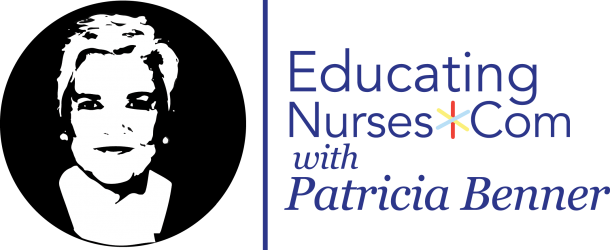Download PDF
Nurse Educator, Carol Thorn uses unfolding cases based on her own practice in her classroom teaching and in-depth discussion of potential problems and interventions with a specific patient who is being cared for by one of the students in the Clinical Debriefing Session. These are two high impact and highly interactive approaches to clinical learning with complementary learning outcomes. Choosing one as opposed to the other would cause gaps in learning. The goal of this learning activity is to help you reflect on the distinct, common, and complementary learning impact these two approaches to clinical teaching-learning activities have.
- Describe and compare what the student learns from each of these complementary teaching and learning approaches. Unfolding Cases and Deeper Learning about Potential Patient Problems and Interventions
- For example, in the Clinical Debriefing the students identify and explain why different patient problems such as Diabetes is related to electrolyte and fluid balance. Just as in the video tape, potential problems of wound healing and infection are discussed as they impact potential patient problems.
- For example, in an unfolding case with a diabetic patient (classroom unfolding case not viewed) upon discovering a blood sugar of 400, students would intervene by giving a sliding scale insulin dose to a patient with an elevated blood sugar, and then check the blood sugars 15-20 minutes later to assess the impact of the insulin dose. The student would then discuss the cause of the elevated blood sugar, and plan the next meal for the day while offering situated coaching on blood sugar control.
- What learning outcomes would you expect from each of these classes? How do you think these two teaching-learning strategies reinforce one another? What learning outcomes would be distinct or missing in either one of the strategies (unfolding case; Deeper Learning about Potential Patient Problems) that would be learned in the other? How do these two approaches impact clinical reasoning?
- Reflect on the student learners comments about Carol’s teaching. Does this learning community seem democratic and respectful to you? What examples from the students’ responses can you cite to make your case for or against a democratic climate within the Clinical Debriefing session? Please describe what students value most about Carol’s clinical teaching.
Dr. Tanner’s Articles on Clinical Judgment
http://slideonline.com/
http://slideonline.com/
Atul Gawande: The Difference Between Coaching and Teaching
Atul Gwande provides a masterful lecture on the distinctions between teaching and coaching that also capture distinctions between knowledge acquisition and knowledge use.
References
Benner, P. “Redesigning Nursing Education March 2012”Newsletter EducatingNurses.com
Tanner, C.A. (2006). Thinking like a nurse: A research based model of clinical judgment in nursing. Journal of Nursing Education , 45(6), 204-211.
Tanner, C.A. (1987) Teaching clinical judgment. In J.J. Fitzpatrick & R.L. Taunton (Eds.) Annual Review of Nursing Research. 5 153-173.
Tanner, C.A., Benner, P., Chesla, C. & Gordon, D.R. (1993). The phenomenology of knowing a patient. Image: The Journal of Nursing Scholarship. 25. 273-280.

